Last month the Smithsonian’s Archives of American Art announced its latest acquisition – 250 linear feet of records documenting the business of Andrea Rosen Gallery, which closed in 2017 after 27 years. Liza Kirwin, deputy director of the Archives, highlights the crucial role that gallery records can play in art-historical research – and discusses some of the challenges of collecting them.
How long has the Archives of American Art (AAA) been collecting the archives of galleries?
For the past 64 years. The Archives of American Art was founded in 1954, at the Detroit Institute of Arts (we became part of the Smithsonian Institution in 1970), and the first gallery records came to us in 1955. Those were the records of the Macbeth Gallery. There were relatively few art dealers in the US before 1900. William Macbeth was the first to devote himself entirely to the sale of American painting and sculpture. [The gallery held Andrew Wyeth’s first solo exhibition, in 1937.] The records of the Macbeth Gallery are unusually complete in correspondence, financial records, and photographs, ranging from the opening of the gallery in 1892 to its closing in 1954. As one of the earliest acquisitions, it formed a foundation for building a complex picture of the US art market.
Today we hold approximately 212 collections that fall in the category of commercial art gallery records, or the papers of art dealers that also include substantive gallery records, providing a staggering quantity of information on the American art market from the late 19th century through the 20th. Of all of our holdings, in terms of extent – that is the size of the collections – gallery records make up about a quarter of our holdings, although we have about 6,000 collections in total.
If one considers our gallery records comprehensively, our greatest strength centres on the market for New York painting and sculpture between 1940 and 1970. We hold extensive, intertwined records for this period, beginning in the 1940s and early ’50s with Kraushaar, Macbeth, Milch, Ferargil, Rehn, Weyhe, Marie Sterner, Downtown, Valentine, Grand Central, ACA, Midtown, and Associated American Artists, among others. Then from the late 1950s through 1970, we offer Willard, Perls, James Graham & Sons, Rose Fried, Tibor de Nagy, Allan Frumkin, Kootz, Betty Parsons, Tanager, Stable, Grace Borgenicht, André Emmerich, Fischbach, Galerie Chalette, Zabriskie, Poindexter, Leo Castelli […] … And we continue to collect every day.
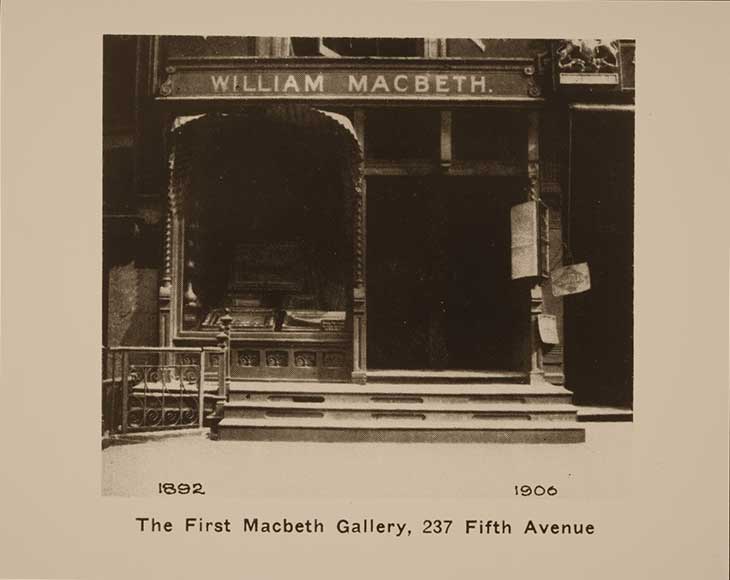
Macbeth Gallery in New York, c. 1896. Archives of American Art, Smithsonian Institution
You mentioned how large gallery archives can be in proportion to those of individual artists, for example, whose records you also collect. Could you break down what can be found in these archives?
It’s true that they can be quite extensive. Hundreds of linear feet – that’s a measurement in archival world; a linear foot is a box. Andrea Rosen is 250 linear feet, that’s very large.
Typically there’s correspondence, financial records of course, lots of photographic material, there are usually artist files – galleries have different ways of organising how they work, but often there are files arranged by artist. There can also be exhibition files, and that’s pretty typical; there are usually inventories or separate sales records, printed material, and administrative files of the running of the gallery.
With the general move to digital technologies, is the amount of material generated getting even greater?
I think your instincts are right there – that with galleries after a certain amount of time there’s a staggering amount of electronic material.
We do collect born digital records, and Andrea Rosen does have born digital material there, and we do have a way of capturing that and assessing that and preserving it and making sure that the digital files have integrity and are maintained.
Do the galleries hand over absolutely everything?
Well, it’s really different in every situation. We can restrict collections if there is a compelling reason; if there’s sensitive material there, we honour those donor requests. If there is a restriction, we allow the records to be consulted with the written permission of the donor.
There could be reasons not to take things – typically, there’s very limited research value in a gallery’s files about advertising; we don’t need to know every time they contacted ArtForum and bought an ad, that sort of thing, or photo services… there are a lot of mundane administrative functions that we don’t necessarily need to preserve in perpetuity. It’s really about the transaction of sales, of works of art, and all the attendant things that go into that.
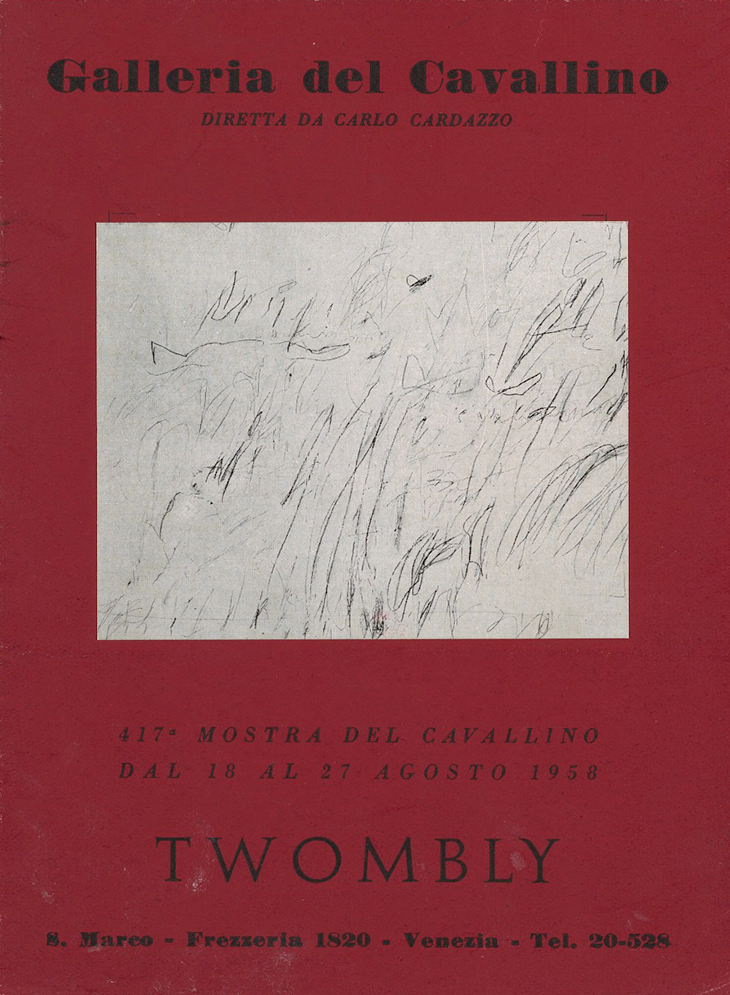
Twombly catalogue from the Galleria del Cavallino, 1958. Leo Castelli Gallery records. Archives of American Art, Smithsonian Institution
How do you go about deciding which archives to acquire?
We focus on gallery records capable of supporting new scholarship from multiple perspectives, through the sales and exhibitions records of individual artists, the development of significant public and private collections, and the contribution to defining or promoting a distinct aspect of art in America.
We seek the records of the most prominent galleries in the US, documenting broad economic and aesthetic trends; gallery records that document significant local, national, or global networks through a depth of primary sources; records of innovative business models for the sale of American art; and records that document communities of interest in American art scholarship. While there are some caveats, in general we seek records documenting the sale of American art and we focus on the records of galleries that have ceased operation, but there are always exceptions.
What kinds of art-historical research might the archives play a role in?
All kinds of topics. Our most heavily used collection is the Leo Castelli Gallery records. It supports research on an endless number of topics – the history of collecting, conservation issues, exhibition installation as an artistic practice, provenance research, catalogue raisonné research, and research on thousands of individual artists, collectors, curators, art dealers, and others represented in the collection, and Leo Castelli himself.
The point that I should emphasis is that we collect a lot more than gallery records; it’s only one aspect of what we collect yet it’s a very important part of the whole network of the American art world.
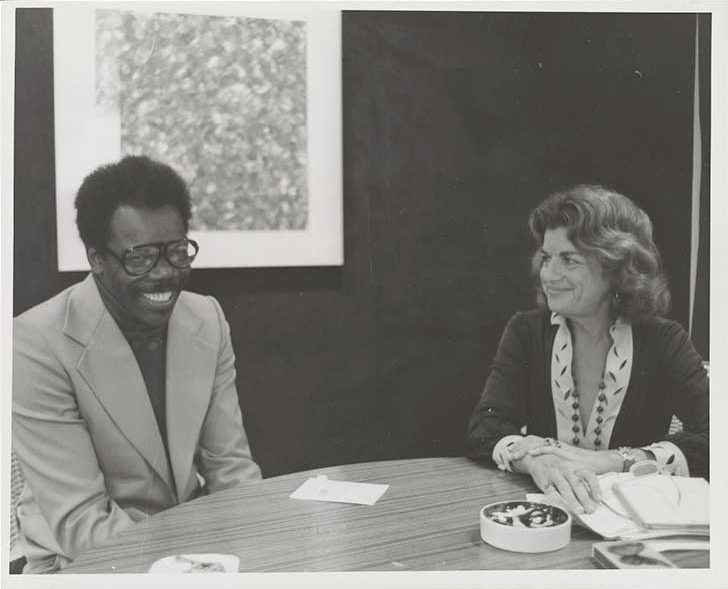
Sam Gilliam and Darthea Speyer in 1976. Archives of American Art, Smithsonian Institution
Does material sometimes slip through the boundaries between the collections?
Yes, it really makes the point in some ways – we have a gallery’s records and that becomes the lynchpin for the papers of the artists who were represented by that gallery, so that you get the full picture of the back and forth of the correspondence, and the collectors who purchased the work. You just get a fuller picture if we build connections through separate but related collections.
It’s very easy to discover these connections on our website. If we hold the papers of an artist and we have the gallery that represented the artist over a long time. There are so many examples of this – we have the superrealist sculptor Duane Hanson’s papers, and then we have the papers of OK Harris. Duane Hanson showed at OK Harris for around three decades. So between his personal papers and the records of the gallery a researcher can get a much fuller picture of how his work sold, exhibited, and his relationship to Ivan Karp, who ran OK Harris. This is one example but there are so many like that.
The art trade is so international – does your scope ever reach beyond American galleries?
The gallery should have had a significant influence on the history of the visual arts in the US. So for instance we have Galerie Darthea Speyer records – that was in Paris, but she showed American artists. We also have the records of Seligmann [Jacques Seligmann & Co.], a Parisian gallery that only has a real smattering of American art but they did have a gallery in New York too, after a point. Those records are enormously valuable for World War Two provenance research – and also, the sales of Seligmann contributed to the development of major gallery collections in the US.
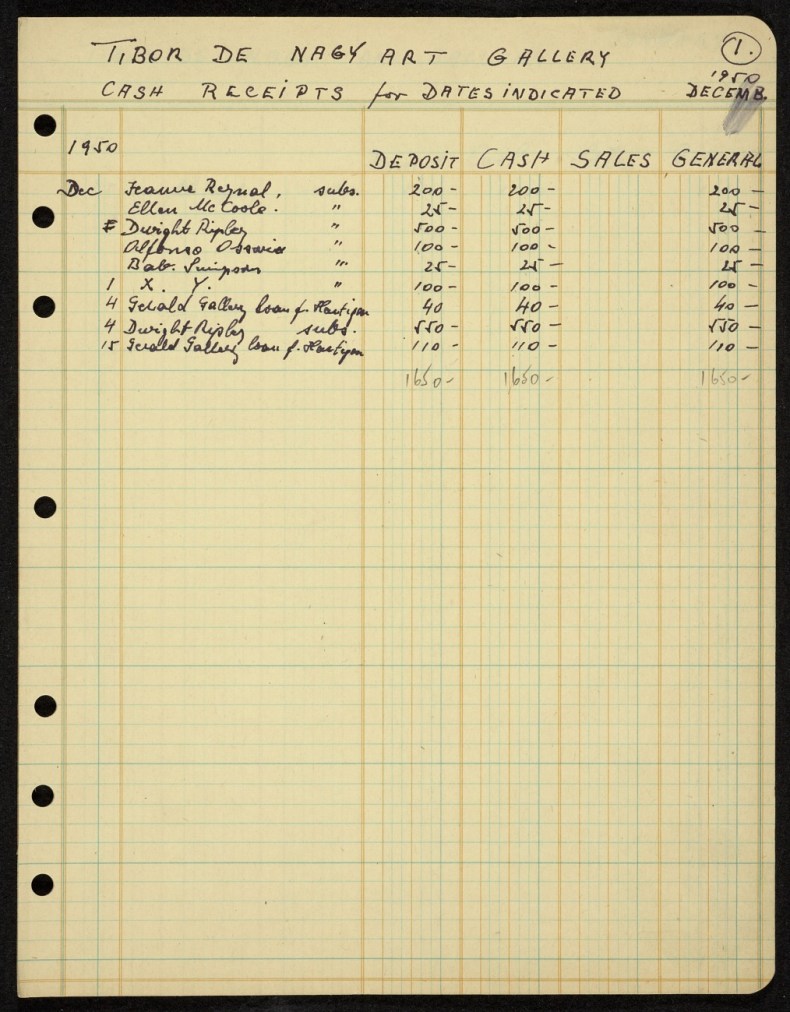
Tibor de Nagy account book with cash receipts for December 1950. Archives of American Art, Smithsonian Institution
A number of recent exhibitions have turned their attentions to the role of the gallery or gallerist – not just as a primary source when researching artworks or artists, but as a subject in its own right. Why do you think this might be?
Gallery records have always been in high demand at the Archives. I do see a lot of people revisiting exhibitions, recreating them, and certainly the gallery records would be a tremendously valuable source for that kind of research. I haven’t actually seen that at the Archives but I’m also not in the manuscript reading room all the time! It’s certainly an avenue that’s worth pursuing.
Unlimited access from just $16 every 3 months
Subscribe to get unlimited and exclusive access to the top art stories, interviews and exhibition reviews.

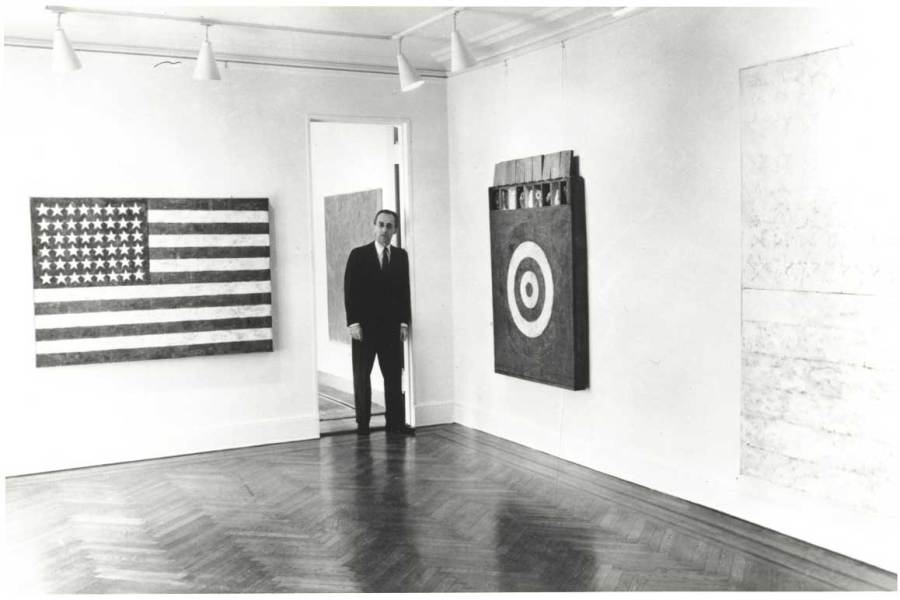
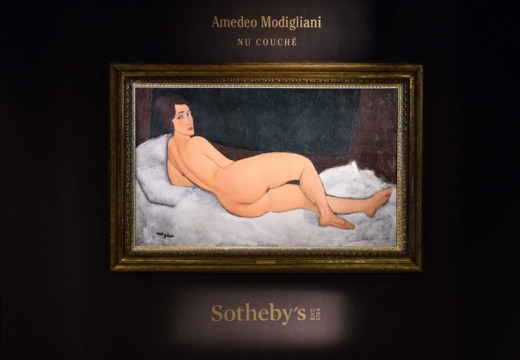
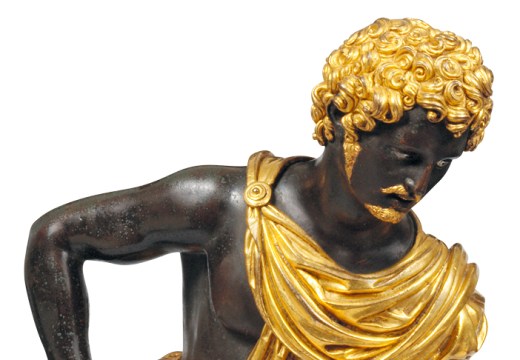
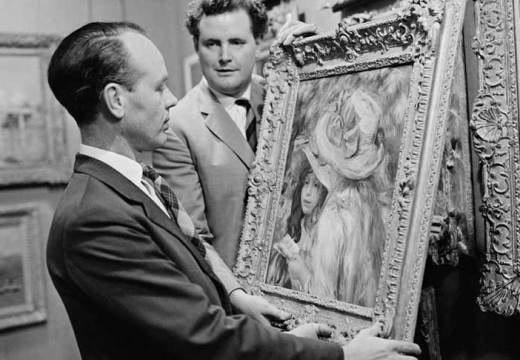









![Masterpiece [Re]discovery 2022. Photo: Ben Fisher Photography, courtesy of Masterpiece London](http://www.apollo-magazine.com/wp-content/uploads/2022/07/MPL2022_4263.jpg)
It’s time for the government of London to return to its rightful home